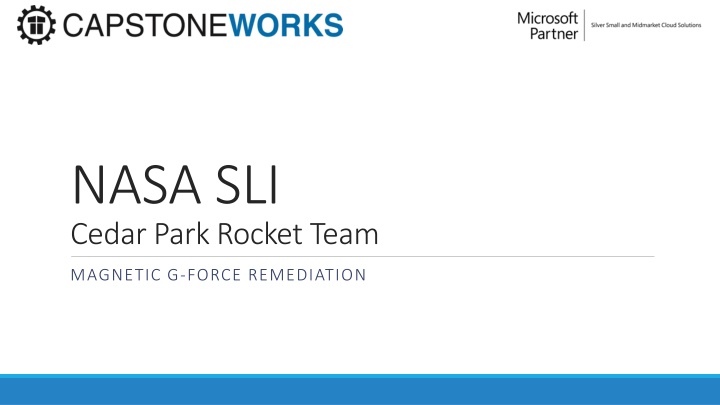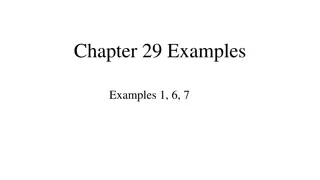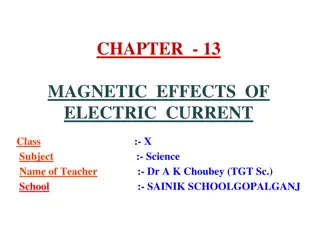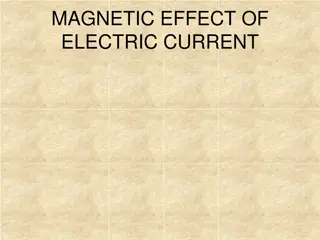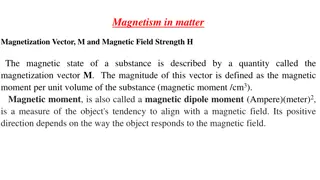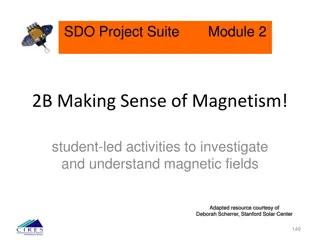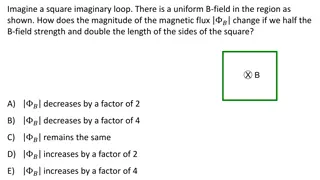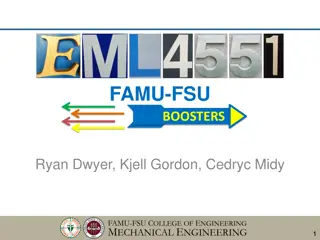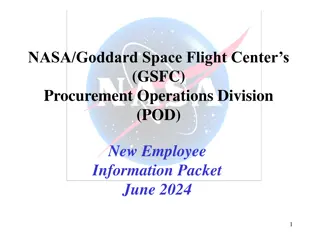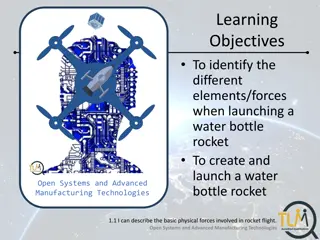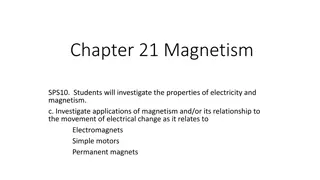NASA Cedar Park Rocket Team Magnetic G-Force Remediation Project
NASA Cedar Park Rocket Team is working on a project involving a rocket that must reach 5,280 feet above ground level and utilize magnetic fields to mitigate the effects of G-forces on its payload. The project includes rocket requirements, preliminary design details, parts, materials, and a recovery system. The team conducted a successful scale model test launch to gather statistics. Various components such as motors, fiberglass airframes, parachutes, and telemetrum are being utilized for this project.
Download Presentation

Please find below an Image/Link to download the presentation.
The content on the website is provided AS IS for your information and personal use only. It may not be sold, licensed, or shared on other websites without obtaining consent from the author.If you encounter any issues during the download, it is possible that the publisher has removed the file from their server.
You are allowed to download the files provided on this website for personal or commercial use, subject to the condition that they are used lawfully. All files are the property of their respective owners.
The content on the website is provided AS IS for your information and personal use only. It may not be sold, licensed, or shared on other websites without obtaining consent from the author.
E N D
Presentation Transcript
NASA SLI Cedar Park Rocket Team MAGNETIC G-FORCE REMEDIATION
Our Rocket Requirements The rocket must reach 5,280 feet above ground level The Rocket payload should delay or equalize the effects of G-Forces on the inside container by using magnetic fields
Our preliminary Rocket design and Goals Rocket stability margin: 5.74 Center of gravity: 856.94 mm Center of diametric pressure: 1440.47 mm
Parts and Materials Motor: Gorilla motor Works J395RT Fiberglass 4 diameter standard wall conical 5:1 nose cone Kevlar tether 5/16 inch diameter 20 feet length : FIN-B-04 0.062 inches thick, 8 inch root chord, 0 inch tip chord, 5 inch span, 8 inch sweep distance public missiles
Parts and materials pg.2 o4 inch diameter G12 fiberglass airframe 48 feet length o4 inch diameter G12 fiberglass 8 inch length diameter coupler o Aeropack 54mm diameter fiberglass motor tube retainer o Altus metrum telemetrum
Parts and Materials pg.3 o4 inch diameter fiberglass bulkplate o18 inch diameter standard parachute o36 inch diameter standard parachute
Recovery System Redundant black powder charges, circuit systems, and batteries for both the drogue and main parachutes. 2 Altus Metrum Telemetrum altimiters
Scale Model test launch statistics oOur Scale Model reached its apogee of 352 feet in 6.9 seconds and it landed on the ground 18.1 seconds after apogee oIt is 31 inches tall oThe scale model has a total mass of 181g oThe parachute deployed at 0.3 seconds after apogee
Scale Model Parts list oBass wood triangular fins o7-inch Balsa nose cone with a diameter of 2 inches oPayload body tube section 12 inches long 2 1/4-inch diameter oLower body tube section 12 inches long 2 1/4-inch diameter
Scale Model Parts List pg.2 o Paper coupler 4 inches long 2-inch inner diameter o Balsa bulkhead o Stainless steel eyebolt o Two balsa centering rings OD 2 inches ID 24 MM o 24 mm motor tube
Scale Model Parts List pg.3 o 58 inch Kevlar shock cord o 28-inch elastic shock cords o Diameter of parachute 14 inches
Our Payload choice Magnetic Dampening Using magnetic levitation to diminish G-forces experienced by the payload
Subscale Payload model 24 mm tube inside a 26 mm tube Ceramic magnets attached to the underside of the 24 mm and on the inside of the 26 mm tube
